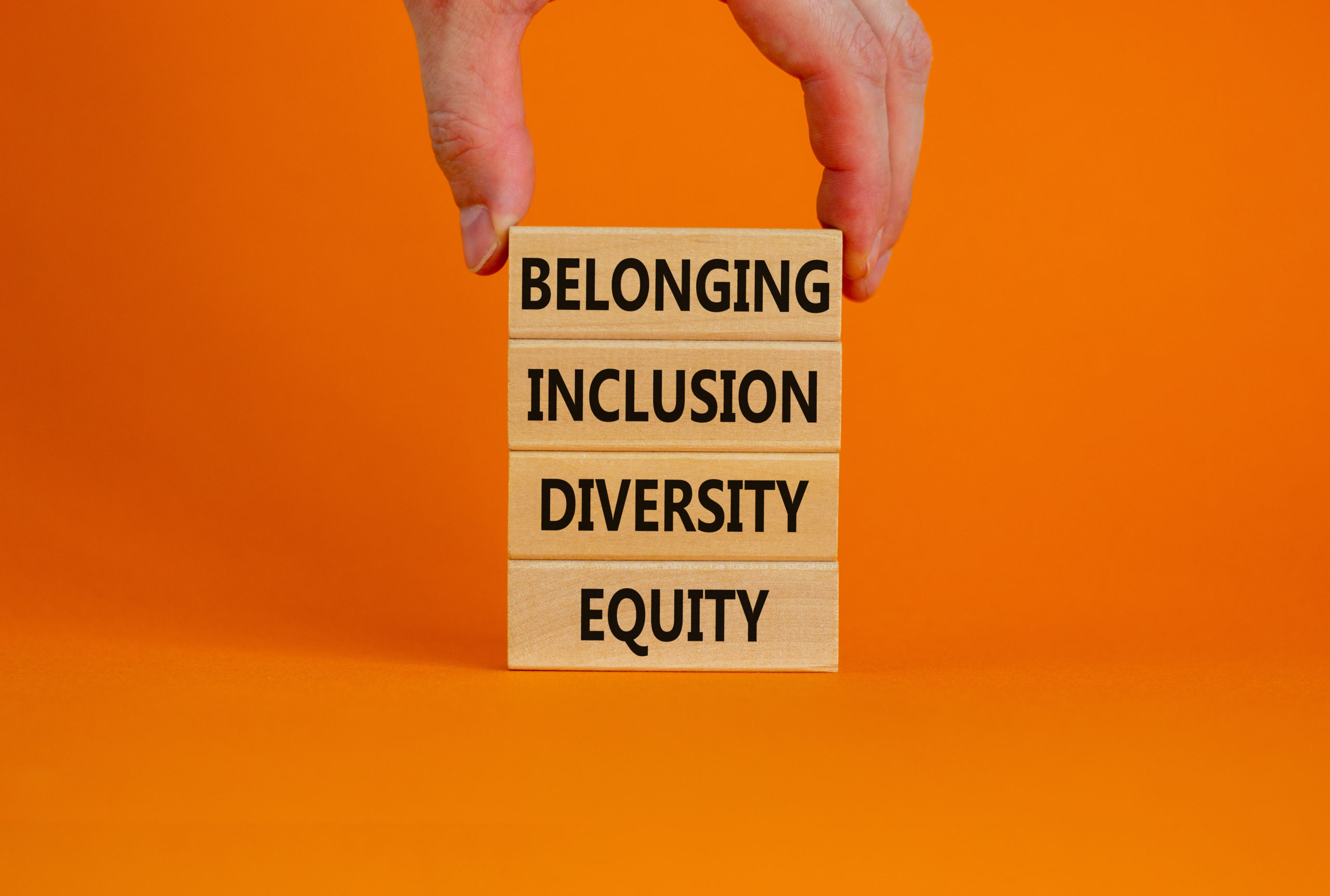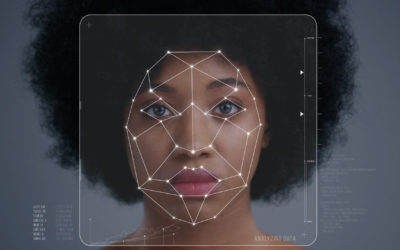As the year begins in the workplace, the themes of diversity, equity, and inclusion (DEI) are resonating throughout many different departments’ lexicons, no longer limited to the realm of human resources. The issues go beyond corporate culture. When addressing topics such as strategic business advantages for increased levels of innovation and better business performance, our attention increasingly turns to DEI strategies.
1. Inclusive Marketing
In the wake of last year’s landmark events and bad buzz, brands have had to adapt their content considerably in order to retain a loyal customer base. This is where inclusive marketing comes in. Once seen as a “nice thing to do”, it will become an essential approach to marketing in the coming year. This shift will shape how brands are going to practice marketing from now on. Already in 2019, 61% of Americans thought that diversity in advertising was important, according to a study by CMO by Adobe.
Until now, we have seen high levels of consumer tolerance on the subject, but that chapter is over. In 2021, there are no more excuses. Faithful customers who could be somewhat passive are now taking a much more active role, not letting anything go. They no longer accept seeing people who don’t look like them on their favorite websites. They want to see a reflection of their reality, which comprises diversity and inclusiveness. In a previous newsletter, I mentioned an article that said that it was also essential for Chief Marketing Officers (CMOs) to address subjects such as diversity and inclusion because they are unavoidable and highly strategic issues.
You can read the newsletter & article here: Diversity and Inclusion more than ever #4: article — The CMO’s Unique Responsability for Diversity and Inclusion
Today more than ever, brands need to stay relevant and inclusive marketing can allow them to have a better understanding of their different target groups in order to optimize their marketing campaigns, services, and/or products.
Brands really need to take the plunge and invite different people to sit at the table to embrace diversity and let the magic of inclusiveness and the innovation it inspires do their work.
An example of a brand that has embraced inclusive marketing: Fenty Beauty, which brought in $500 million in sales in its first year of business. This shows that inclusive marketing is not just good for the common good but also for the company and its finances. Not to mention cancel culture and its victims, which can result from a lack of DEI efforts in a brand’s culture and marketing campaigns. A word to the wise is all that’s needed!
2. From diversity & inclusion (D&I) to diversity, equity & inclusion (DEI) and even belonging

Diversity, equity, inclusion & belonging
Much has been said about companies that have recently launched strategies, initiatives, and even training programs to promote diversity and inclusion. Diversity refers to individuals from diverse backgrounds — with diverse experiences, points of view, etc. — and the representation of such individuals. We have seen companies increasing their levels of diversity and the trend is not going to stop here but will only intensify from now on.
Inclusion, on the other hand, is a choice that everyone must remain committed to at every moment of every day in order to allow diversity to express itself and work its magic. The goal of inclusion is to recognize that everyone is unique, to respect and value our uniqueness so that each of us can bring our whole true self into play to work. Inclusion is the element that allows you to contribute in a psychologically safe atmosphere, without any fear. As important performance levers, these two factors will remain priorities for companies and become increasingly popular in times to come.
So why do we need to add equity?
Rest assured, the shift from diversity and inclusion (D&I) to diversity, equity, and inclusion (DEI) was not engineered to intellectualize the issue. In the context of gender inequality, gender pay gaps and therefore equity must also be addressed. The issue was therefore positioned within a more comprehensive strategy — DEI — in order to break down the advantages and barriers that some people may encounter at work regardless of their identity and to ensure that everyone has access to the same opportunities to grow, contribute and develop in the workplace.
One only needs to look at recruitment processes still riddled with unconscious bias and the fact that a handicap or a person’s first name can be a barrier to their professional evolution to justify the increase in measures implemented by more and more organizations. In order to attract and retain talent, new generations (Gen Y, also known as Millennials, and Gen Z) are asking companies to be transparent in terms of their culture, compensation (e.g. equal pay policies, salary transparency, and equal opportunities), and commitments to issues such as social impact, DEI, harassment reporting, board representation, and so on.
That’s why you’ve seen a shift to diversity, equity, and inclusion (DEI), with some organizations adding “belonging” to the mix.
Is belonging the new buzzword?
Belonging is an essential component of inclusion. Different from diversity, equity, and inclusion, belonging is a feeling. It makes employees feel welcome, included, valued, and connected in the workplace.
By creating emotional connections, for example, or bringing people together around a common purpose and inspiring your team at work, you can help to create a sense of belonging among your employees. Positive change is then possible when those employees feel part of a group (included) that cares for them as individuals (valued) and empowered by the rich connections that they share with each other.
According to Deloitte and its external 2020 Human Capital Trends survey: “79% of participants said fostering a sense of belonging in the workforce was important to their organization’s success, and 93% agreed it drives organizational performance.”
According to Deloitte and its external 2020 Human Capital Trends survey:
“79% of participants said fostering a sense of belonging in the workforce was important to their organization’s success, and 93% agreed it drives organizational performance.”
3. Reinforcement of unconscious bias campaigns in companies

Unconscious bias
To be most effective, companies must identify and reduce bias, giving participants tools and a few strategies to help them behave and react differently in the future. Unlike in previous years, we now know that one-off training sessions are not effective at addressing the issue.
New approaches recommend setting up series of workshops with better-defined objectives that reinforce topics already covered in previous training sessions to prevent issues from reemerging and make participants more comfortable with topics that perhaps made them uneasy in the past. This year, organizations are more focused than ever on addressing unconscious bias and are increasingly aware of the fact that such an approach will form part of an ongoing journey.
4. Microaggressions within the company : Awareness and actions to address them

Microaggressions at the workplace
Although home-based work has become increasingly common with the arrival of the global pandemic, microaggressions are still very present in companies — whether in person in the office, by telephone, or by video-conference. People can be harsh, especially with the frustrations of multiple confinements that can be psychologically draining for some. For those unfamiliar with the term, microaggressions are subtle but harmful actions defined as verbal, behavioral, and environmental indignities that communicate hostile, derogatory, or negative racial slights and insults to the target person or group.
Examples of microaggressions:
- Women being cut off by their male colleagues during meetings, despite their level of experience and position in their organization. Even worse, women also have their ideas stolen by their male colleagues without anyone saying anything.
- Scornful or hostile looks and unsolicited sexual advances.
- Making fun of another person because of their physical appearance or being left off an email chain.
In this year’s trends, companies will try to eliminate friction points that could damage the commitment of their best talents in terms of human resources. With the turnover of some companies severely affected by the issue, microaggressions in the workplace will be firmly on the agenda. DEI strategies will aim to increase awareness of the subject among all employees through various means (e.g. conferences, webinars, training series, etc.). Although we often hear about topics such as racism, microaggressions can be sneakier and harder to identify. Victims often question themselves and are rarely taken seriously by others, which can cause them to develop a lack of confidence in themselves, their team, or their company. Some may even be told that they are being overly sensitive!
By working on microaggressions in the workplace, companies are seeking to address and prevent the problems they can cause, such as anxiety, depression, suicidal thoughts, alcohol-related problems, and a lack of self-confidence to progress professionally, etc. Raising awareness of the issue and managing microaggressions at work will remain a top priority in 2021.
5. Increasing diversity in corporate governance

Diverse businesspeople around a boardroom table
I’m sure you’ve heard stories about boardrooms full of old white men joking with each other. Well, new generations of investors want to change the game and have understood that the issue is not just about positive social impact but also business performance.
Diversity within a business relates to representation at all levels of the company, from the operational to the strategic — which has a direct impact on the company.
Boards are becoming increasingly open to diversity, including women and minorities.
As of January 1st, 2020, 10,000 companies in France were required to include 40% of women on their executive boards thanks to the 2011 Copé-Zimmermann Law. It worked: all of the groups in the French SBF 120 index (the Société des Bourses Françaises 120 Index) have validated the challenge. In 2020, women still struggled to gain entrance to executive committees in France, however, holding only 17.9% of positions in the SBF 120.
Companies in Europe have had mandatory quotas for female directors for years but there are still not enough women and minorities on executive boards, so this remains a priority to work on.
Update for Copé-Zimmermann Law’s 10th years anniversary in January 2021 (in French).
What about elsewhere?
If you need more proof that diversity in corporate governance is a growing trend, look no further: late last year, Nasdaq proposed a reform to the U.S. Securities and Exchange Commission (SEC) on diversity to require publicly traded companies to have or explain why they do not have at least two diverse board members, including one person who identifies as an underrepresented minority or LGBTQ+, and one person who identifies as a woman.
In 2020, only 21.2% of S&P 500 board members were women
The same goes for Goldman Sachs, which showed its commitment at the beginning of last year by imposing diversity on the boards of directors of all companies that wanted to collaborate with them in order to go public.
Diversity, equity, and inclusion affect so many different sectors. I think that 2021 also holds many surprises for us that we are going to discover throughout the year.
Don’t hesitate to get in touch if you have other trends you would like to share for this year. It would be a pleasure to discuss them together.
ABOUT THE AUTHOR

Dolores Crazover is the founder and CEO of DEI & You Consulting.
She has a passion for microbiology and is on a mission to complete a Rubik’s Cube within four years.
Redefining Activism: New Trends in Allyship for the Upcoming Years
Picture a chessboard. At its center, two pieces stand mirrored, symbolizing the strategic interplay of equity and inclusion, the key...
Navigating DEI in Tech: 4 Steps Towards Ethical Algorithms and Inclusive Data Privacy
In our fast-paced, technology-driven world, personal data has become a hot topic. Every click, every purchase, every post - they all...
Maximizing DEI Metrics: 5 Ways to Elevate Your DEI Strategy Through Data Collection
Four ascending bar graphs measuring the DEI metrics of your organization When diversity, equity, and inclusion (DEI) work is...
Redefining Activism: New Trends in Allyship for the Upcoming Years
Picture a chessboard. At its center, two pieces stand mirrored, symbolizing the strategic interplay of equity and inclusion, the key...









